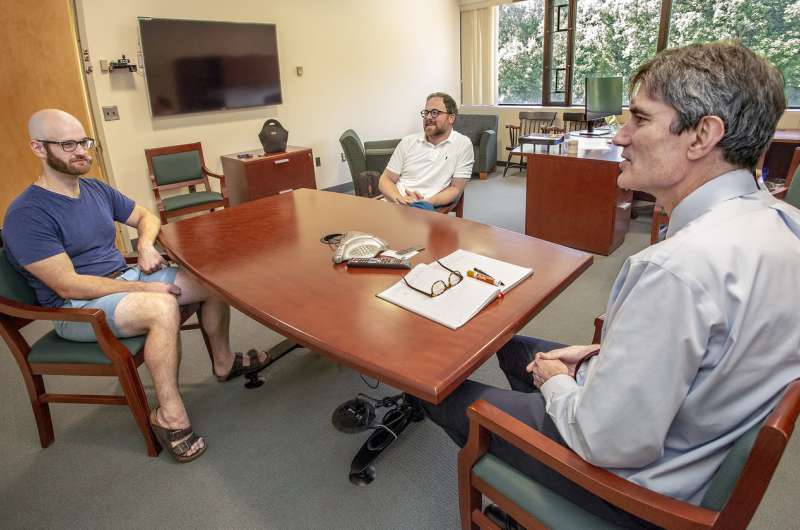Growing magnetic fields in deep space: Just wiggle the plasma

Contrary to what many people believe, outer space is not empty. In addition to an electrically charged soup of ions and electrons known as plasma, space is permeated by magnetic fields with a wide range of strengths. Astrophysicists have long wondered how those fields are produced, sustained, and magnified. Now, scientists at the U.S. Department of Energy's (DOE) Princeton Plasma Physics Laboratory (PPPL) have shown that plasma turbulence might be responsible, providing a possible answer to what has been called one of the most important unsolved problems in plasma astrophysics.
The researchers used powerful computers at the Princeton Institute for Computational Science and Engineering (PICSciE) and the National Energy Research Scientific Computing Center (NERSC) at the DOE's Lawrence Berkeley National Laboratory to simulate how the turbulence could intensify magnetic fields through what is known as the dynamo effect, in which the magnetic fields become stronger as the magnetic field lines twist and turn. "This work constitutes an important step toward answering for the first time the question of whether turbulence can amplify magnetic fields to dynamical strengths in a hot, dilute plasma, such as that residing within clusters of galaxies," said Matthew Kunz, an astrophysics professor at Princeton University and an author of the paper, which was published in The Astrophysical Journal Letters.
Past research has focused on dynamos as they might occur in so-called collisional plasmas, in which particles collectively behave as a fluid. But intergalactic plasmas are collisionless, so past experiments are not necessarily relevant. This new research is meant to address that gap. "We wanted to see how the dynamo would behave in the collisionless regime," said Denis St-Onge, graduate student in the Princeton Program in Plasma Physics at PPPL and lead author of the paper.
St-Onge and Kunz focused on the ways in which the velocities and magnetic fields of individual particles within collisionless plasma are directly linked. This linkage—if one quantity increases or decreases, the other must, too—would seem to rule out the existence of a dynamo. "If this were the whole story, it would be disastrous for the dynamo," said St-Onge. "To match what we observe in space, the dynamo would have to increase the strength of the seed magnetic field by at least a factor of one trillion, but the energy of the particles would also have to increase, and there's just not enough available energy in the dynamo for that to happen."
To produce the strength of magnetic fields observed in space, the tie that binds particle energy to magnetism must be severed. This is just what St-Onge and Kunz observed in the computer simulations: that types of plasma turbulence known as mirror and firehose instabilities caused the plasma particles to scatter, and scattering broke the link between particle energy and magnetism and allowed the amplitudes of the magnetic fields to grow closer to what is observed in nature.
Future research, St-Onge notes, will focus on why this turbulent scattering occurs. "In addition, we would like to investigate the specifics of particle scattering," St-Onge said. "How exactly do the instabilities cause the particles to scatter, how often does the scattering occur, and can the scattering lead to sudden, dramatic growth of a magnetic field? The last idea is a notion proposed by PPPL Director Steven Cowley years ago. We would like to investigate whether this is true."
More information: Denis A. St-Onge et al, Fluctuation Dynamo in a Collisionless, Weakly Magnetized Plasma, The Astrophysical Journal (2018). DOI: 10.3847/2041-8213/aad638
Journal information: Astrophysical Journal , Astrophysical Journal Letters
Provided by Princeton Plasma Physics Laboratory




















